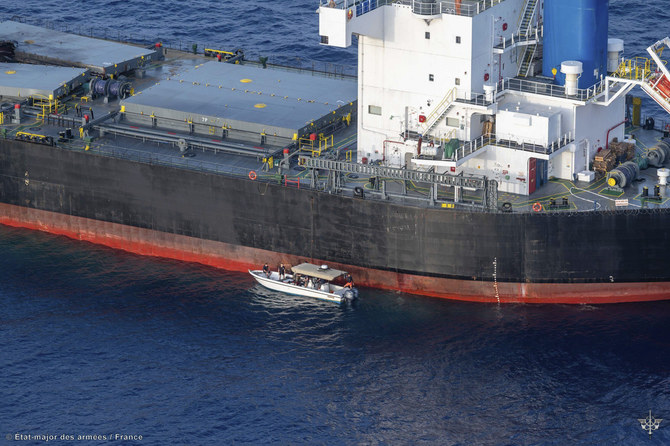AL-MUKALLA: The leader of Yemen’s Houthi militia, Abdul Malik Al-Houthi, said on Thursday that his forces had attacked 129 ships in international waters since the start of their campaign in November, claiming that his group has resisted political and economic pressure to cease targeting ships.
“There are no political, economic, or other factors that might influence our activities,” he said in a televised speech.
The militia has launched 27 ballistic missiles and drones in 12 operations against 10 ships in the Red Sea, Indian Ocean, and Mediterranean during the last seven days, Al-Houthi said, who disputed previous media reports that the militia had reduced its maritime strikes.
“Our actions have not decreased, but there has been a decrease in navigation and ship movement on the American and British sides, as well as a near-complete absence of Israeli activity.”
The Houthi leader’s threat to continue attacking ships came as the US Central Command announced on Thursday morning (Yemen time) that its forces had destroyed a new wave of drones and missiles fired by the Houthis over the international seas off Yemen, as well as foiled Houthi missile launches by destroying launchers.
The US military said it destroyed two missile launchers in a Houthi-controlled area of Yemen on Tuesday night.
On the same day, the Houthis fired two anti-ship ballistic missiles over the Red Sea from areas under their control, and neither the US-led coalition nor foreign commercial ships were targeted.
Two drones fired by the Houthis in Yemen over the Red Sea were intercepted by US forces before reaching their targets on Wednesday morning.
“It was determined these missiles and systems presented an imminent threat to US, coalition forces, and merchant vessels in the region. These actions are taken to protect freedom of navigation and make international waters safer and more secure,” the US military said in a statement.
Hours before the US military statement, the Houthis claimed on Wednesday night to have shot down another US military MQ-9 Reaper drone over the central province of Marib, shortly after locals shared images and videos on social media of what appeared to be a downed Reaper drone in the province’s desert.
The drone was engaged in a “hostile mission” above Marib when a “locally made” surface-to-air missile struck it on Wednesday morning, the Houthis said.
This is the sixth time the Yemeni militia has claimed to have shot down an MQ-9 Reaper drone since the start of their Red Sea operation and the third in May.
The Houthis’ Red Sea activities resulted in the loss of one commercial ship, the capture of another, and the targeting of scores more ships in international maritime channels and pushed shipping companies to forgo the Suez Canal via the Red Sea in favor of longer and more costly routes across Africa.
Meanwhile, the Aden-based central bank sanctioned six Yemeni banks on Thursday for failing to follow an earlier directive to relocate their activities from Houthi-controlled Sanaa to government-controlled Aden.
The central bank ordered Yemeni banks and other financial institutions to stop doing business with Tadhamon Bank, Yemen Kuwait Bank, Shamil Bank of Yemen and Bahrain, Al-Amal Microfinance Bank, Al-Kuraimi Islamic Microfinance Bank, and International Bank of Yemen for dealing with the Houthis, which the Yemeni government and other countries consider terrorists, and not relocating their headquarters to Aden.
The central bank also instructed Yemen’s public and financial institutions to deposit all banknote denominations issued before 2016 at the central bank and other commercial banks in government-controlled areas of Yemen within 60 days.
The economic war between the Yemeni government and the Houthis has escalated since 2016 when the government shifted the central bank’s offices from Sanaa to Aden.
The Houthis replied by ceasing to pay public workers in regions under their control, banning the circulation of banknotes printed by the Yemeni government in Aden, and targeting oil terminals in government-controlled Shabwa and Hadramout.




























